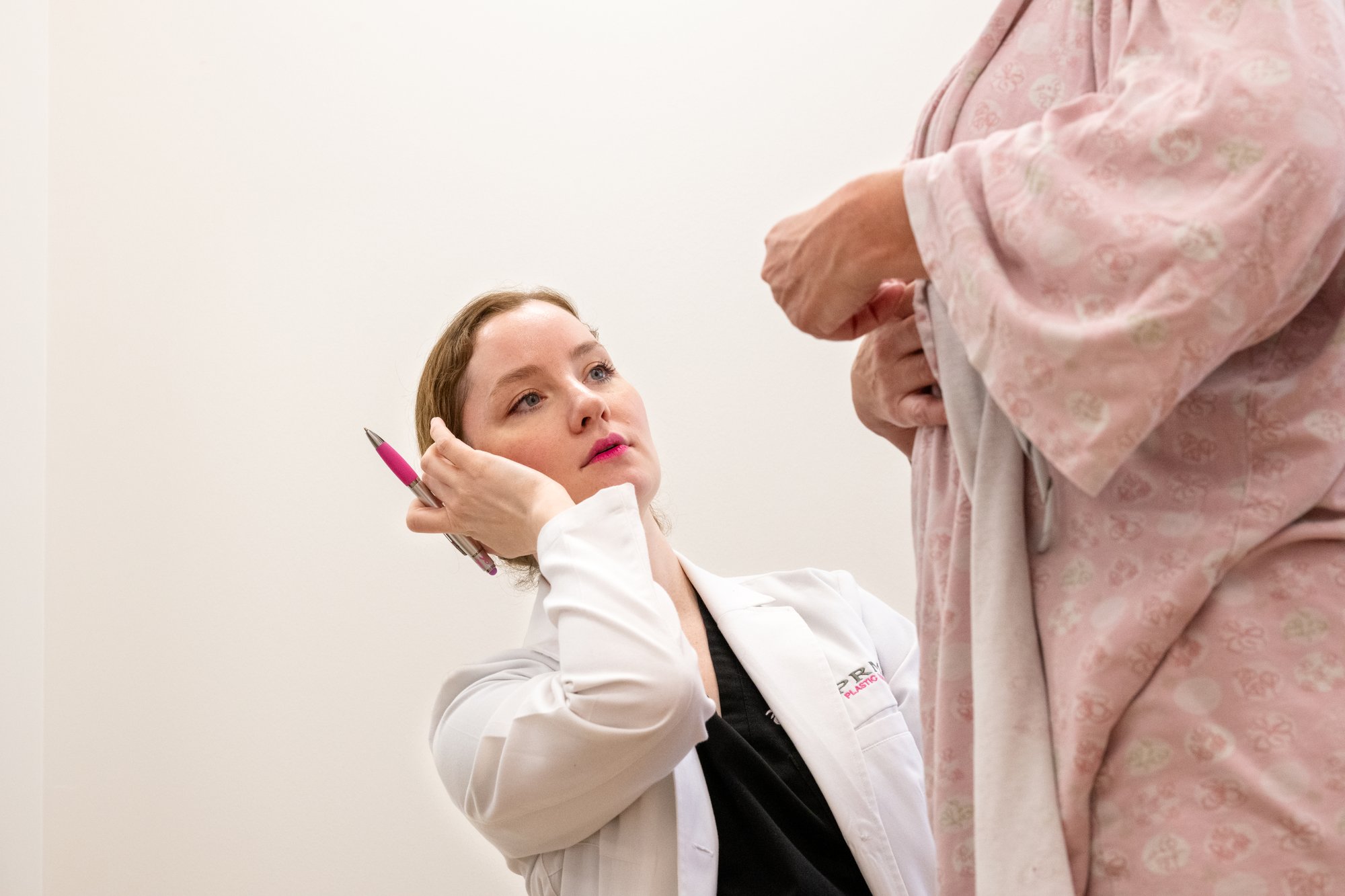%20-%20Banner%20copy.webp?width=1920&height=1280&name=PRMA%20-%20Direct%20to%20Implant%20Reconstruction%20(T3)%20-%20Banner%20copy.webp)
Direct-to-Implant Breast Reconstruction
What is Direct-to-Implant Reconstruction?
For women seeking a more streamlined reconstruction process after mastectomy, direct-to-implant breast reconstruction offers an immediate solution, placing a permanent implant at the same time as the mastectomy, avoiding the need for a tissue expander.
This option is typically available to patients who are candidates for immediate reconstruction, often those with early-stage breast cancer or undergoing prophylactic mastectomy with no need for radiation therapy.
Key Information
- Single-Step Procedure: The permanent implant is placed immediately after mastectomy—no tissue expander required.
- Shorter Treatment Timeline: Fewer surgeries and faster overall recovery than staged reconstruction.
- Best for Select Candidates: Ideal for those not needing radiation and with sufficient skin and tissue after mastectomy.
- Implant Options Available: Choice of implant types and sizes to match your body and preferences.
- No Abdominal Surgery Required: Unlike tissue-based flaps, this option doesn't involve microsurgery or donor site recovery.
- Immediate Aesthetic Result: Patients wake up with breast volume already restored.
- May Be a Bridge to Natural Tissue Later: In some cases, implants are used temporarily before converting to a flap reconstruction.
What to Expect During Surgery
Before surgery, you'll meet with your surgical team to review your personalized plan and ask any last-minute questions. Once you're in the operating room, you'll receive general anesthesia to ensure you're fully asleep and comfortable throughout the procedure.
If you're having a mastectomy at the same time, your breast surgeon will begin by carefully removing the breast tissue while preserving as much skin—and sometimes the nipple—as possible.
Immediately following the mastectomy, your PRMA plastic surgeon will place the permanent breast implant beneath the chest muscle or just under the skin, depending on your treatment plan. A surgical mesh may also support the implant and help define the breast shape. The surgeon then closes the incisions, using great care with symmetry and aesthetics.
%20-%20What%20to%20expect%20during%20surgery%20copy.webp?width=564&height=376&name=PRMA%20-%20Direct%20to%20Implant%20Reconstruction%20(T3)%20-%20What%20to%20expect%20during%20surgery%20copy.webp)
Before & After








Recovery Timeline
-
Week 1:You can expect soreness, tightness, and limited arm mobility during the first week. You’ll have surgical drains in place and will need help with daily activities. Pain is manageable with prescribed medications, and rest is key.
-
Week 2:Drains are often removed around this time. Swelling begins to decrease, and gentle movement becomes easier. Most patients can resume light activities.
-
Week 3-4:By the third and fourth week, you’ll continue regaining range of motion and energy. Many return to non-strenuous work and daily routines, though patients should still avoid lifting and vigorous activity.
-
Week 5-6:Most physical restrictions are lifted. You may feel close to “normal,” but internal healing continues. Final implant positioning and cosmetic results will gradually settle over the next few months.
-%20The%20Nation%E2%80%99s%20Destination%20for%20sensation%20Restoration%20copy.webp?width=1350&height=900&name=PRMA%20-%20Direct%20to%20Implant%20Reconstruction%20(T3)-%20The%20Nation%E2%80%99s%20Destination%20for%20sensation%20Restoration%20copy.webp)

The Nation’s Destination for
Sensation Restoration
Am I a Candidate for Direct-to-Implant Breast Reconstruction?
Not every woman will be an ideal candidate for direct-to-implant breast reconstruction. Like all breast reconstruction options, this approach depends on several factors, such as your medical history, cancer treatment plan, and body characteristics.
You may be a strong candidate for direct-to-implant reconstruction if:
- You are having a mastectomy without needing radiation afterward
- You have enough healthy skin and soft tissue to support the implant
- You are seeking a shorter overall recovery time
- You prefer to avoid multiple surgeries or tissue expansion
- You have not previously had chest radiation or implant-related complications
- You are in good overall health with no conditions that could impact healing
- You are comfortable with implant-based reconstruction and understand the long-term considerations
Find Your Surgeon
Will Insurance Cover Direct-to-Implant Breast Reconstruction?
In most cases, insurance will cover a direct-to-implant breast reconstruction. Under the Women’s Health and Cancer Rights Act (WHCRA), all group health plans and insurers that cover mastectomy are also required to cover breast reconstruction.
At PRMA, our team works closely with patients and insurance providers to verify coverage and maximize benefits.
For more information, visit [Insurance FAQs] in the patient resource center.

Preparing for Surgery
Learn more about:

%20-%20What%20is%20Direct%20to%20implant%20reconstruction%20copy.webp?width=645&height=419&name=PRMA%20-%20Direct%20to%20Implant%20Reconstruction%20(T3)%20-%20What%20is%20Direct%20to%20implant%20reconstruction%20copy.webp)


